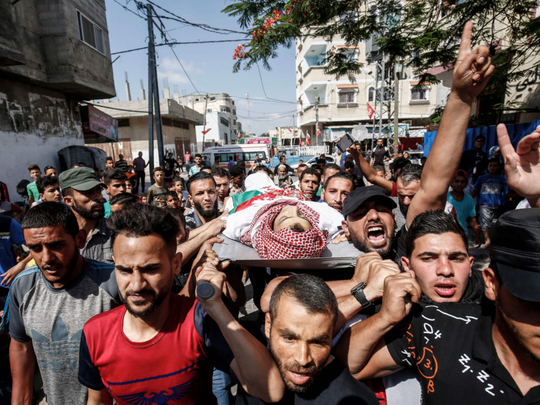
The current developments in the region point towards a kind of re-formulation of the prevailing situation in the Middle East. First, there were the Palestinian protests ‘Marches of Return’ from Gaza Strip and the massacres of the marchers by Israeli troops deployed along the border in 11 battalions with the besieged Strip. The protests launched, among other goals, aimed to condemn Israel’s ten-year blockade of Gaza.
Second, the US inaugurated its embassy (indeed its ‘colony’) in occupied Jerusalem to meet the “promise” made by the US President Donald Trump, despite international condemnation and deep concern over the violation of international legitimacy and the stability of the regional situation.
Third, the ongoing storming of Al Aqsa Mosque has antagonised the Palestinians more than any other measure since the occupation of Jerusalem in 1967; especially when the Israeli flag was raised by the Jewish colonisers during celebrations of the so-called Israeli ‘Day of Unification of Jerusalem’.
A fourth prominent development came with the broad tension between Iran, the US and Israel particularly in the Syrian arena, which is likely to escalate in the region as a whole.
In response to the massacres in the Gaza Strip, the occupying Israeli state claimed that it was defending itself in the context of its usual claim of “existential threat to the state”. But on the ground there appears confusion, if not fear, of everything that happened and will happen. The dilemma for Israel is that losing control of Gaza Strip means it will have a snowballing effect that will turn graver and ever larger as it moves towards the West Bank and the 1948 Palestine. With the current state of partial attrition of the Israeli occupying forces and deployment of regular troops along the tensed northern Syrian-Lebanese front, the snowballing effect is indeed rolling and getting bigger across historic Palestine and the region as well.
Neither the inauguration ceremony of the US embassy, nor the speeches delivered drew the attention of the world which was preoccupied with the massacres in the Gaza Strip that called for a global reaction to Israel’s thoughtless killing of the defenceless Palestinian protesters. Israel sought to make a successful ceremony of the transfer of the US embassy to encourage other countries to follow suit. But countries around the world soon condemned the “unwarranted Israeli violence” as Israeli snipers continued to target peaceful protesters, journalists and medical teams as well as other Gazans who had converged on the border area.
It was only the US who moved to blame Hamas and the innocent Palestinian protesters for the massacres. Moreover, the US blocked a UN Security Council draft statement voicing outrage at the situation and sorrow at the loss of many Palestinian lives at the hands of Israeli troops. The draft called for an independent and transparent investigation into such crimes, indicating the illegality of moving any foreign embassy to occupied Jerusalem and calling on all countries, including the US, to comply with the relevant Security Council resolutions.
The crime seems to be deliberate and planned. The Israeli occupation forces have warned that it is willing to commit a massacre to stop the marches and crush the will and resistance of the Gazans. Although Israel keeps its forces on permanent alert to deal with the marchers, it will not dare now to move the battle from the border to the heart of Gaza in an open war. During the weeks of the marches, the Palestinian resistance refrained from any firing at Israel and no Israeli soldier or citizen was hurt or sustained even a scratch.
In this context, Israel entered into a direct conflict with Iran in Syria, and neither seems ready to back off. The tensions erupted as the right-wing Israeli Prime Minister Benjamin Netanyahu was trying to involve the US more in the Syrian quagmire, as tension persists with the presence of Hezbollah in Lebanon with its vast arsenal of weapons.
The importance of the ‘Marches of Return’ and the achievements made are quite significant. They restored the Palestinian issue on the agenda of the international community, stressing the unity of the people, their cohesion and willingness to sacrifice. They drew the world attention to the insistence of the Palestinian people to hold on to their full legitimate rights, albeit at a high price; especially the issues of occupied Jerusalem and their right of return, which will not be removed from the Palestinian collective memory by any political decision.
It is true that the Palestinian Nakba (1948 Palestinian exodus) persists, but the Zionist state has not won, and the Palestinians have not been defeated, and their blood that has been shed is expected to be translated into achievements, the most urgent of which now is to bring an end to the siege and blockade of the Gaza Strip. Indeed, the continuing ‘Marches of Return’ emphasise that the issue of Palestine is relatively in good shape, moving on by the power of the people, and its cause has not and will not die. Such is the case. So will the 70th anniversary of Palestinian Nakba turn into a ‘political Nakba for Israel’?
Professor As’ad Abdul Rahman is the chairman of the Palestinian Encyclopaedia.









